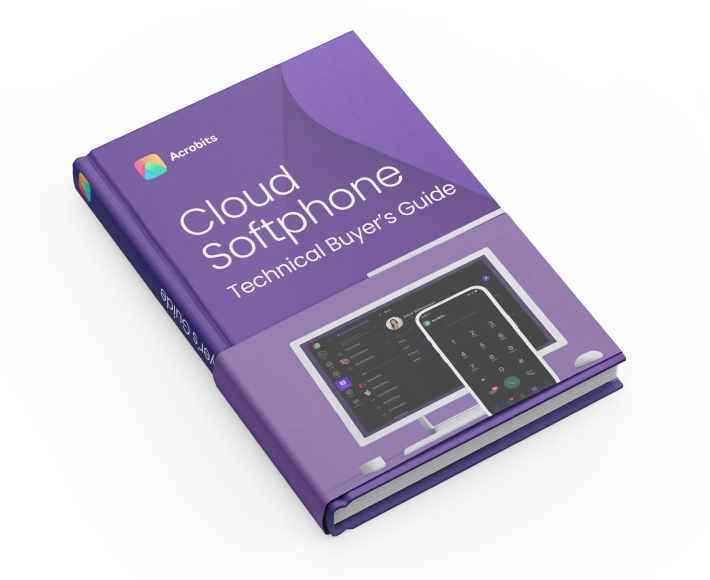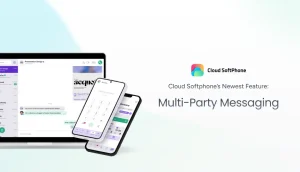
Build a white label softphone app
Create a custom white-label softphone with Cloud Softphone.
- No devs needed
- Native desktop apps
- 100+ premium features

As MaX UC reaches it’s end-of-life, providers must decide between brand control, simplicity, or cost savings. Options include:
Each path comes with unique trade-offs in branding, customization, and long-term growth potential. Choose based on your priorities: fast transition, brand differentiation, or operational ease.
As MaxUC end of life is coming soon, you’re facing a big decision about where to go next. And it’s not just about replacing features—it’s about finding a solution that fits now and adapts as your needs change.
Security risks are also a growing concern—an unsupported platform means vulnerabilities and potential data breaches, while staying compliant with industry standards becomes harder without regular updates.
You’re left balancing the urgent need for a secure, reliable solution as you consider the future of your services…
Operational challenges also add up. No official support means more technical issues, service disruptions, and higher maintenance costs, especially for CLECs and ILECs who may need to hire third-party support just to keep things running smoothly.
And then there’s the risk of losing customers. As you work to protect your brand identity and ensure customer trust, you need a platform that will not only meet today’s demands but also support long-term growth and stability.
Whether you’re considering moving to Microsoft Teams, becoming a reseller, or exploring a more independent, flexible path, each choice has unique pros and cons.
The right path depends on your priorities, like brand control, operational simplicity, or long-term adaptability. To make the transition smooth, it’s essential to understand what each option brings.
Some paths might seem quick and stable but could limit flexibility or impact your brand identity. Others require a bit more setup but offer more freedom down the road.
Let’s dive into the three main options providers could consider to navigate this shift and find a setup that supports you both today and in the future.

Best for: Providers seeking stability with minimal infrastructure changes
If you’re after a stable, easy switch from MaxUC, Microsoft Teams offers a solid choice. With Teams, you get reliable support, strong security, and fewer setup hassles.
It’s a sensible path for providers who want minimal disruption and are fine with a simple, brand-neutral solution.
However… by choosing Teams, you’re aligning with Microsoft’s brand and roadmap. This means less control over customization, a loss of brand presence, and often, slimmer profit margins.
The Teams route is easy and stable but comes at the cost of brand and flexibility. It’s a fit for providers looking for a fast fix, not long-term independence.
Best for: Providers prioritizing brand independence and long-term flexibility
For providers who want to stay independent and keep control over their brand, a server-agnostic, flexible solution like Acrobits’ Cloud Softphone is ideal.
This approach gives you a wide range of features and compatibility with any class 5 softswitch.
It’s perfect for those who want to keep their options open for future changes, avoid softswitch lock-in, and maximize ROI on current infrastructure.
While the independent route requires a bit more effort upfront, it’s built to ensure you stay agile as Metaswitch sunsets in 2029. This is the path for providers looking to maintain brand identity and adapt over time.
This path is for communication service providers who do not want to become Teams resellers, keep their brand, and continue to compete with proactive roadmaps and updates. It’s a long-term solution for those ready to lead their own way.
Best for: Providers focused on cutting costs and simplifying operations
For providers prioritizing cost reduction and simplicity, the pure reseller path could be a tempting option. By dropping direct UCaaS management and reselling a third-party solution, you lower operational costs and streamline processes.
It’s ideal for those who want a low-overhead approach without complex technical upkeep. However, this choice comes with significant trade-offs.
While you’ll save on costs, you lose your technical expertise, independence, and ability to stand out in the market. Essentially, it’s a path where you sacrifice control for simplicity.
This path is a good choice for those looking to reduce overhead fast, but it comes with a real loss of independence and differentiation. It’s efficient, yet restrictive.
Each of these paths—Teams, Reseller, and Independence—offers distinct ways to navigate the MaxUC end-of-life.
But each path serves different goals: stability, cost savings, or complete control.
| Key Point | Issue | Solution | Path(s) Addressing This |
| Customer Ownership | Moving to Teams dilutes brand identity, reducing direct control over customer relationships. | Choose a platform that allows branding and custom customer interactions. | Independent Path |
| Cost and Flexibility | Teams and larger UCaaS platforms often incur higher costs for custom features, limiting flexibility. | Adopt a flexible, cost-effective platform with adaptable pricing models. | Pure Reseller Path, Independent Path |
| Brand Differentiation | Reselling a large platform like Teams risks losing market differentiation. | Maintain brand autonomy with customizable platforms that support unique features. | Independent Path |
| Softswitch Dependency | Reliance on large UCaaS platforms can restrict control over feature updates and service offerings. | Opt for a platform that enables independence from vendor-driven changes. | Independent Path |
| Innovation Limitation | Large platforms like Teams may struggle with rapid feature deployment and innovation. | Choose a platform with a strong feature roadmap and flexibility to adapt. | Independent Path |
| Customer Trust and Brand Control | Reselling Teams may reduce customer trust and personal brand engagement. | Implement a solution that maintains control over brand interactions and customer data. | Independent Path |
| Revenue Models | Teams’ per-seat cost model may reduce profit margins compared to other models. | Consider MaX UC alternatives with flexible pricing, such as per-active-call costs. | Pure Reseller Path, Independent Path |
| Operational Simplicity | Some providers prioritize simplicity and minimal transition effort. | Choose a platform with straightforward setup and reduced operational complexity. | Microsoft Teams Path, Pure Reseller Path |
Choosing the right path after MaxUC’s end-of-life can be challenging. If you’d like personalized guidance on making the best choice, schedule a demo with our team. Let’s discuss how we can create a tailored solution that meets your goals.

2024 was a big year for the telecom sector. This year’s shaping up to be even bigger. From artificial intelligence and regulatory challenges to Wi-Fi 7 and 6G, here are seven ways we expect the telecom industry to evolve in 2025. 1. AI Shapes Both Present and Future Unsurprisingly, artificial intelligence remains both the most […]

There’s no denying AI is making inroads in almost every part of business. But what happens when it comes to customer service? AI is transforming how businesses interact with their customers by automating repetitive tasks, analyzing data in real-time, and enabling personalized experiences at scale. From chatbots that resolve issues instantly to predictive algorithms that […]

Within an organization, teams and departments typically develop their own bonds and their own ways of communicating. But what happens when people from various business functions are brought together for a specific project? There are many advantages to cross-functional teams, which combine skills and resources to move projects forward and solve problems creatively. But the […]

At Acrobits, we’ve never been good at standing still. Ever since we developed the first mobile VoIP application to appear on iTunes and Google Play, we’ve been looking for new ways to enhance our customer offerings. Always with One Goal in Mind Creating new opportunities to make our applications more compelling and the user experience […]